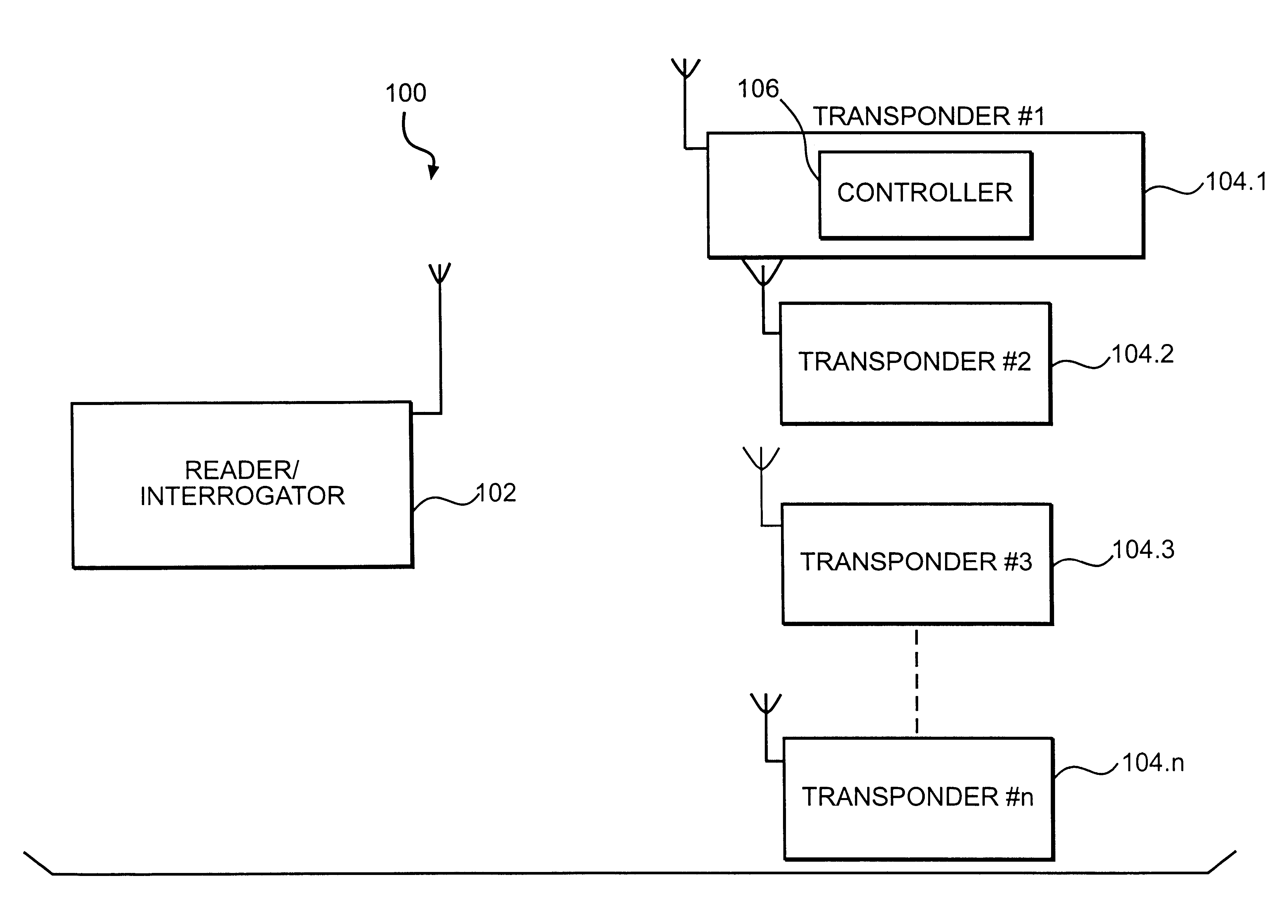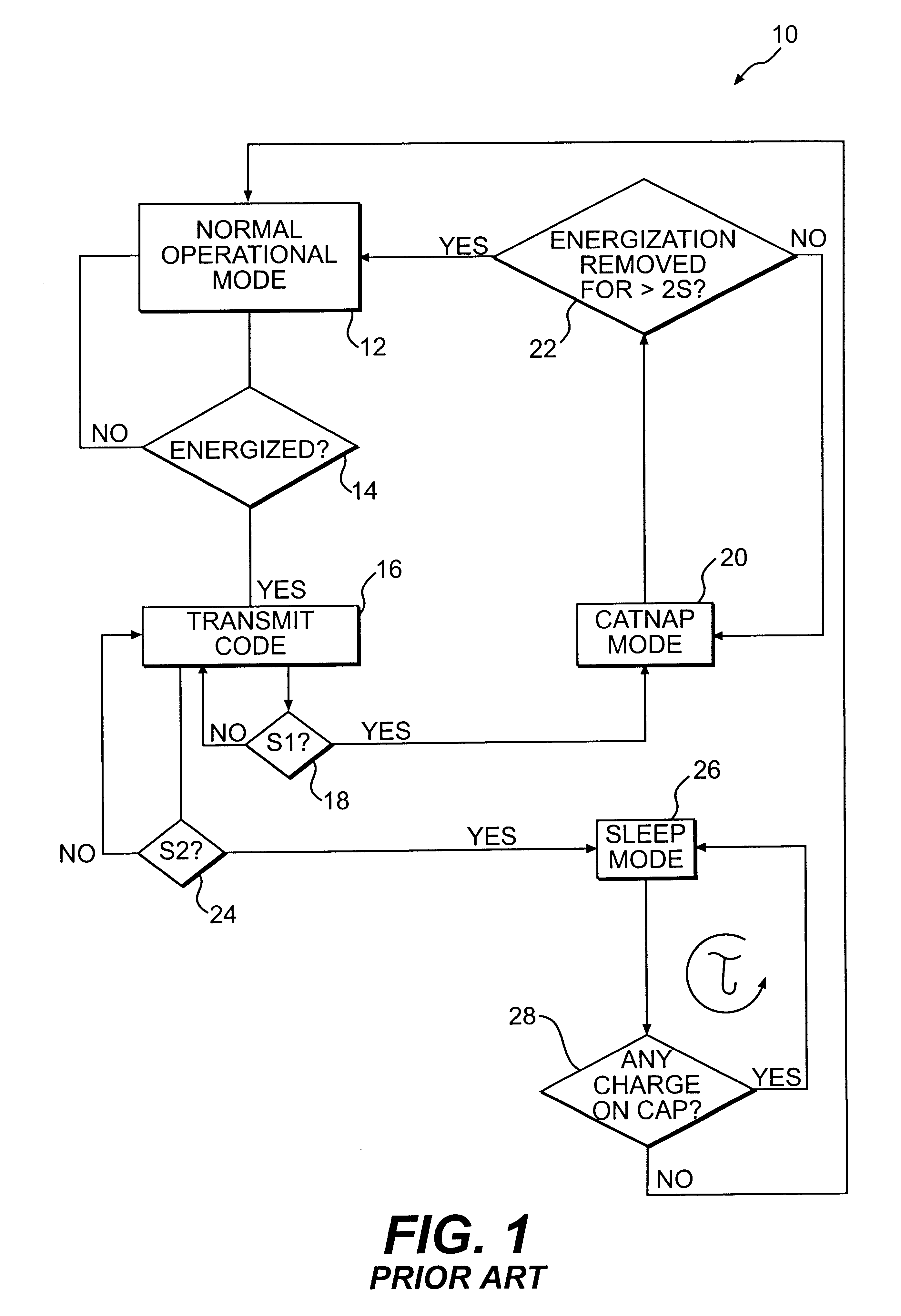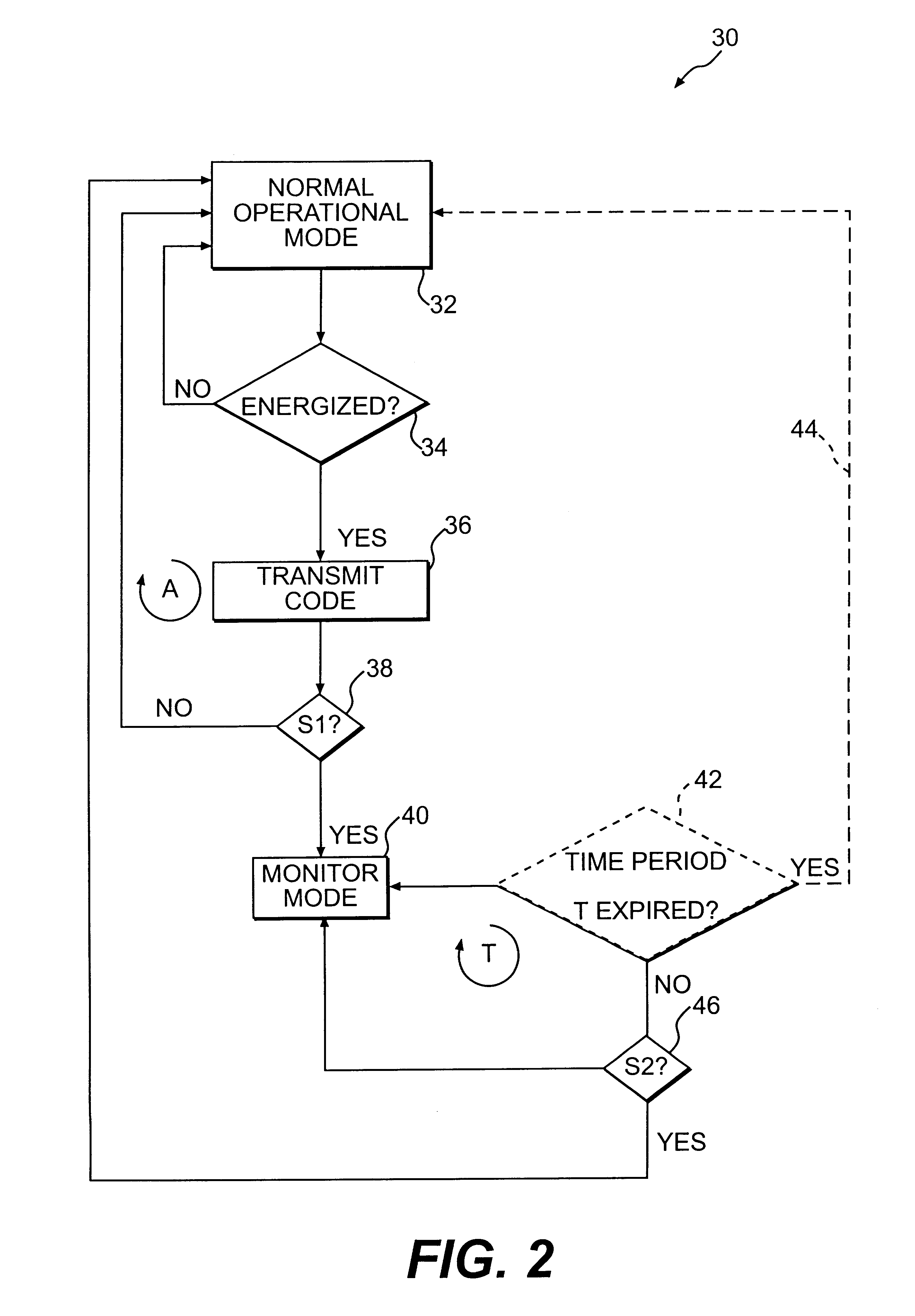Delayed reset mode model for electronic identification systems
a technology of electronic identification system and mode model, which is applied in the field of operation mode of transponders, can solve the problems of not being able to switch to the normal operation mode, and no control method of transponder misreading
- Summary
- Abstract
- Description
- Claims
- Application Information
AI Technical Summary
Problems solved by technology
Method used
Image
Examples
Embodiment Construction
A diagram illustrating the various modes and operation of a transponder forming part of a prior art electronic identification system is generally designated by the reference numeral 10 in FIG. 1.
The transponder has a normal operational mode 12 wherein it, when energized at 14 by an interrogation signal from an interrogator or reader, by means of backscatter modulation transmits at 16 an identification code to the reader. The reader receives this signal and a microprocessor in the reader identifies and if necessary, counts the transponder. The reader thereupon transmits at 18 to the transponder a first signal S.sub.1 to cause the transponder to cease transmitting the code and to enter a catnap mode at 20. The transponder remains in this mode until the end of a short period, typically 2 to 10 seconds after the energization has been removed from the transponder. After this short period has expired at 22, the transponder thus rapidly resets to the normal operational mode wherein it can ...
PUM
 Login to View More
Login to View More Abstract
Description
Claims
Application Information
 Login to View More
Login to View More - R&D
- Intellectual Property
- Life Sciences
- Materials
- Tech Scout
- Unparalleled Data Quality
- Higher Quality Content
- 60% Fewer Hallucinations
Browse by: Latest US Patents, China's latest patents, Technical Efficacy Thesaurus, Application Domain, Technology Topic, Popular Technical Reports.
© 2025 PatSnap. All rights reserved.Legal|Privacy policy|Modern Slavery Act Transparency Statement|Sitemap|About US| Contact US: help@patsnap.com



